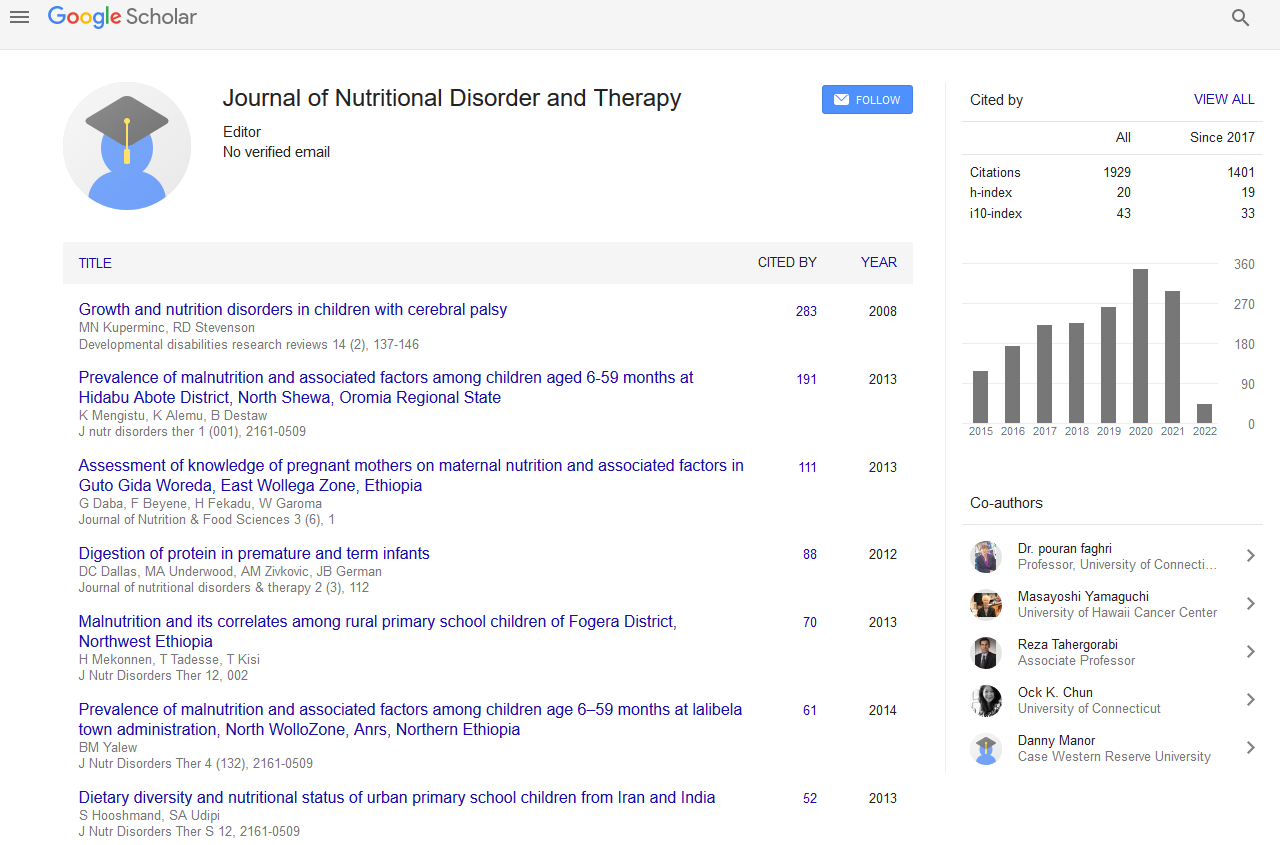Indexed In
- Open J Gate
- Genamics JournalSeek
- Academic Keys
- JournalTOCs
- Ulrich's Periodicals Directory
- RefSeek
- Hamdard University
- EBSCO A-Z
- OCLC- WorldCat
- Publons
- Geneva Foundation for Medical Education and Research
- Euro Pub
Useful Links
Share This Page
Journal Flyer

Open Access Journals
- Agri and Aquaculture
- Biochemistry
- Bioinformatics & Systems Biology
- Business & Management
- Chemistry
- Clinical Sciences
- Engineering
- Food & Nutrition
- General Science
- Genetics & Molecular Biology
- Immunology & Microbiology
- Medical Sciences
- Neuroscience & Psychology
- Nursing & Health Care
- Pharmaceutical Sciences
Abstract
A Pilot Study on Predictive Factors for Over Weight and Obesity in School Children of Coimbatore, Tamil Nadu, South India
S. Shajithanoop, C. Palanivelu, P. Senthilnathan, P. Praveenraj and M.V.Usha Rani
Objective: To understand specific factors associated with overweight and obesity in children of Coimbatore through a non invasive method. Methodology: A cross - sectional study was conducted in four urban schools of Coimbatore and school children aged between 9 years and 17 years of age (n=252, mean age 13 ± 2.3 years, Boys n=142, Girls n=111) were recruited by purposive random sampling method. Children with physical limitations, mental disability or children undergoing any form of clinical therapy were not included in this study. Anthropometric assessment was done and data were analysed by Linear and Logistic regression models using SPSS (version 11, Chicago: SPSS, Inc.) P value less than 0.05 was considered as statistically significant.
Results: The mean BMI in boys (16.7 ± 2.8 kg/m2) was lower than the mean BMI of girls(19.1 ± 3.3 kg/m2).The mean BMI and body weight in obese girls with “double chin” was 23.9 ± 2.6 kg/m2 and 56.8 kg respectively. Importantly, the mean body weight (49.4 kg) was higher in girls of parents with hypertension, followed by the mean body weight of girls (44.6 kg) of obese parents. Specific factors namely outdoor physical activity as playtime, dietary pattern were associated significantly with BMI (p<0.01, r 2= 0.81) in the children of this study. The BMI of children with 'double chin' was comparatively high than children without double chin. Sedentary children who habitually consume snacks while watching television are at a higher risk (Odds ratios=1.44, p<0.01,) for obesity than children who do not. Progressive increase in frequency and duration of outdoor playtime significantly (Odds ratios: 2.54, p<0.01) reduces excess weight in overweight and obese children by nearly three times than those children


